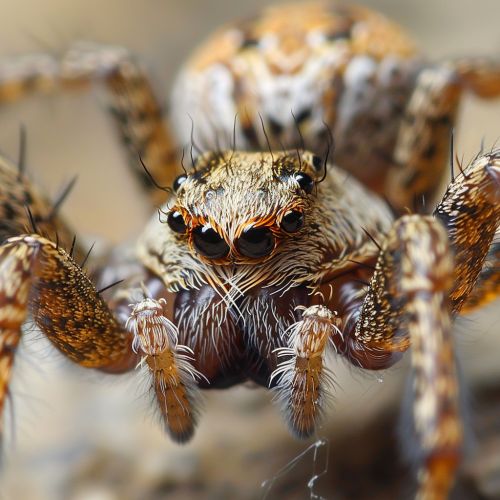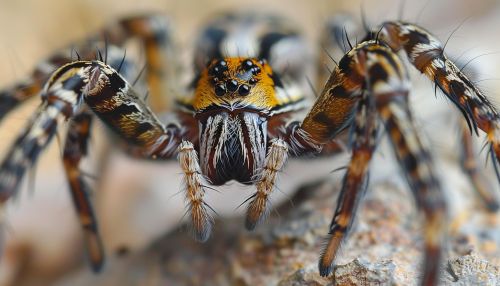Venomous Spiders
Introduction
Venomous spiders are a group of arachnids that possess venom glands and specialized structures, known as fangs, that they use to inject venom into their prey. The venom of these spiders is a complex mixture of molecules, including proteins, peptides, and small organic compounds, which can have a variety of effects on the biological systems of their prey and potential predators.
Classification and Diversity
There are over 45,000 known species of spiders, belonging to the order Araneae, and distributed across 120 families. Among these, a significant number are venomous, with the ability to deliver venom that is harmful to humans. The most notorious of these belong to the families Theridiidae (cobweb spiders), Sicariidae (recluse spiders), and Atracidae (Australian funnel-web spiders).
Venom Composition
Spider venom is a complex cocktail of bioactive molecules. These include neurotoxins, which target the nervous system of the prey, and cytotoxins, which can cause cell death. The venom also contains enzymes, such as hyaluronidase, which help to spread the venom through the tissues of the prey. The exact composition of the venom can vary greatly between different species of spiders, and even between individuals of the same species.
Venom Delivery
Venomous spiders deliver their venom through a bite using their fangs. These fangs are part of the spider's chelicerae, which are the first pair of appendages on the spider's cephalothorax. The fangs are hollow, allowing the spider to inject venom from its venom glands into its prey. The size and shape of the fangs can vary greatly between different species of spiders, with some species having large, robust fangs capable of penetrating human skin, while others have smaller, more delicate fangs.
Effects of Spider Venom on Humans
While the majority of spider species are harmless to humans, a small number of species can deliver bites that are medically significant. The venom of these spiders can cause a range of symptoms, from localized pain and swelling to systemic effects such as nausea, vomiting, and in rare cases, death. The severity of the symptoms can depend on a number of factors, including the species of spider, the amount of venom injected, and the individual's immune response to the venom.
Treatment of Spider Bites
The treatment of spider bites depends on the species of spider involved. For most spider bites, the first line of treatment involves cleaning the wound and applying a cold compress to reduce swelling. In the case of bites from more dangerous species, such as the black widow or brown recluse, antivenom may be administered. It is important to seek medical attention immediately if a spider bite is suspected to be from a venomous species.
Conservation and Ecological Importance
Despite the fear that they often inspire, venomous spiders play a crucial role in ecosystems as predators of insects and other small invertebrates. They help to control pest populations and contribute to biodiversity. Many species of venomous spiders are also of conservation concern, with habitat loss and climate change posing significant threats to their survival.
See Also


